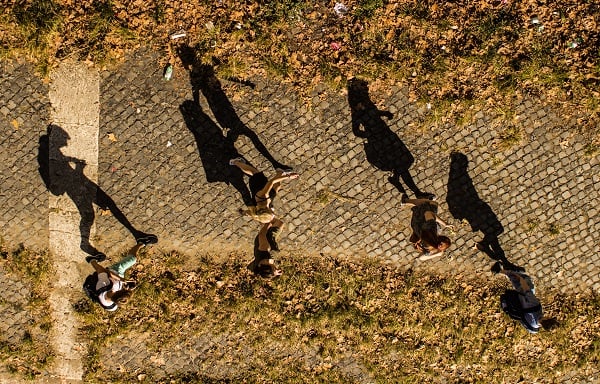Published on
Access and Support Critical to Success for Traditionally Underserved Students

Higher education institutions play a massive role in supporting economic growth and prosperity, but this cannot be an accidental by-product of their work. Entire communities tend to be underserved as a result of structural issues, including poor K-12 educational options and a lack of college-going culture. Institutions need to be able to transcend these issues to create opportunities for greater numbers of prospective students. In this interview, Maurizio Trevisan reflects on how City College forges pathways to postsecondary success for students from traditionally underserved communities.
The EvoLLLution (Evo): Why is it so important for postsecondary institutions to specifically work to create access for underserved communities?
Maurizio Trevisan (MT): There are a few critical reasons we need to create access. One is social justice—people should have opportunities regardless of where they’re born or what kind of background they have. As a just society, we should provide opportunities to everybody regardless of where they come from. It’s not fair that people who come from a certain segment of society and by definition have more chances than others, that’s really the basis of social justice.
The other thing to work on is the importance of a diversity of perspectives. We need the points of view and solutions to problems from different perspectives. If we do not open access to all the people from whatever walk of life, we are limiting ourselves of the possibilities of their experiences to the future of society. In order to solve the complex problems that we’re facing as a society we need input from everybody.
Evo: What are some of the most significant roadblocks to enrolling students from traditionally underserved communities?
MT: There are a great many obstacles standing in the way of more enrollments of students from underserved communities. A number of these roadblocks are inherent to the fact that many of the students coming from underserved communities don’t have access to educational experiences that put them apart from the other students. If a student goes to a school in a suburban neighbourhood or private school, they have a much better chance of getting a better education than if you come from schools where discipline is probably the most important focus of school administrators and teachers. After all, this focus on discipline means the educational mission of the school becomes secondary.
Another roadblock is that many institutions tend to focus on certain criteria that will naturally exclude people from an underserved community or a certain background. We rely completely on scores and prior experience. In order for us to open the door, we need to really open the door and look at different criteria.
Evo: Once enrolled, what are some of the roadblocks to persistence for these learners?
MT: There are academic, life and social roadblocks standing in the way of persistence and completion. That said, one major roadblock in our experience is that many of the kids that come from the top of the high school rankings aren’t prepared to succeed in higher education. Being at the top of the high school system environment is easy. You just need to be smart in order to get through with flying colors. Once you get to an environment where being smart is not enough, you need study methods and some of these kids have a hard time simply managing their lives. Some of these kids, for example, don’t have the support that other kids may have when they go home. In the traditional standard view of the American or western life, students go home to a family with parents who can help them and answer questions because they went through the same experience when they were young. This is probably true on TV and in movies but in reality, the experiences that people come from are very different. Some go back homes and they are not necessarily supported, not because of the lack of desire from their parents but because their parents probably are busy working two or three jobs. Some of the families are single-parent homes and, simply, a number of parents have not gone to college or high school themselves. In some cases, the students are parents themselves. We have students in our programs who are homeless and enrolled in medical school, so at the end of the day they are going to a shelter instead of their own home. It’s a very different reality.
My experience has been that in addition to the academic issues, social issues play a major role as preventive roadblocks to these students.
Evo: How has City College worked to overcome these obstacles to attract, enroll and retain students from underserved communities?
MT: We’ve done a lot to ensure pathways into the institution are open for students of diverse backgrounds. For starters, we do not pay too much attention to scores on entrance exams. We are a BSMD degree so our students are coming straight from high school—they have to have a certain level of proficiency at the SAT or their overall score in high school, but we use what we call the “holistic approach” to recruitment. We do not necessarily focus only on the scores but we also focus on the desire of these kids to become physicians, whether or not there is any evidence throughout their life that this commitment is proven. We use our holistic approach through the interviews and we know that certain kids coming from a different background will find it much more difficult to have the traditional experience that qualifies many students for medical school. They don’t necessarily know any physicians; they don’t have parents or relatives that are doctors so don’t have experience shadowing an uncle or a friend of the family to put on their CV. We have a much broader perspective on the students’ various experiences to see whether or not they have a real interest and passion for medicine.
And the other thing that we do is spend a lot of time with the students. In many medical schools in particular, there is a “sink or swim” mentality, this notion that you have to go through fire in order to come through the program and therefore you can withstand all the pressure once you become a doctor. We have a more familial approach. First of all, our students are very young because they start right out of high school, so we need to have a more nurturing approach where we follow and support students’ progress. We don’t wait for failure; we know when to intervene. We try to support the students throughout their entire career because—given their age and background—they need a fair amount of support.
Evo: How does City College benefit from this work to serve underserved populations?
MT: First of all, the most important thing is that society benefits. City College has been in place since 1847 and until 30 to 40 years ago was a tuition-free institution. The number of people that have gone through City College and made a significant impact in our society is numerous: Ten Nobel Prize winners, 23 Oscar winners, Pulitzer Prize winners, and Secretary of State Colin Powell, among others. These were all kids who were provided an opportunity that they wouldn’t otherwise have had. The most important thing is not so much the benefit to City College but actually the benefits to the community. The success of City College over 170 years is actually a testament to the fact of how valuable it is to provide opportunities to underserved communities.
Author Perspective: Administrator


